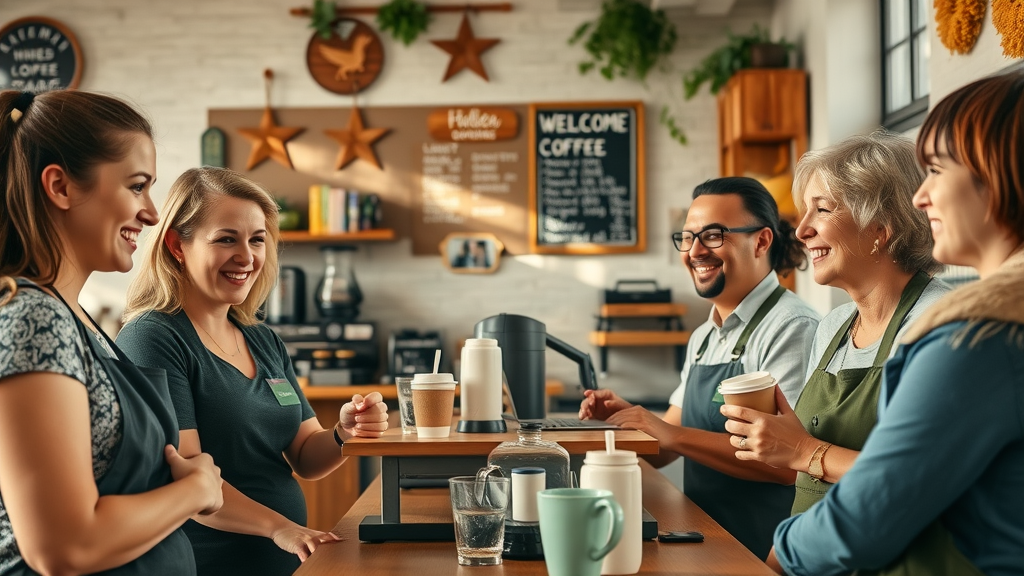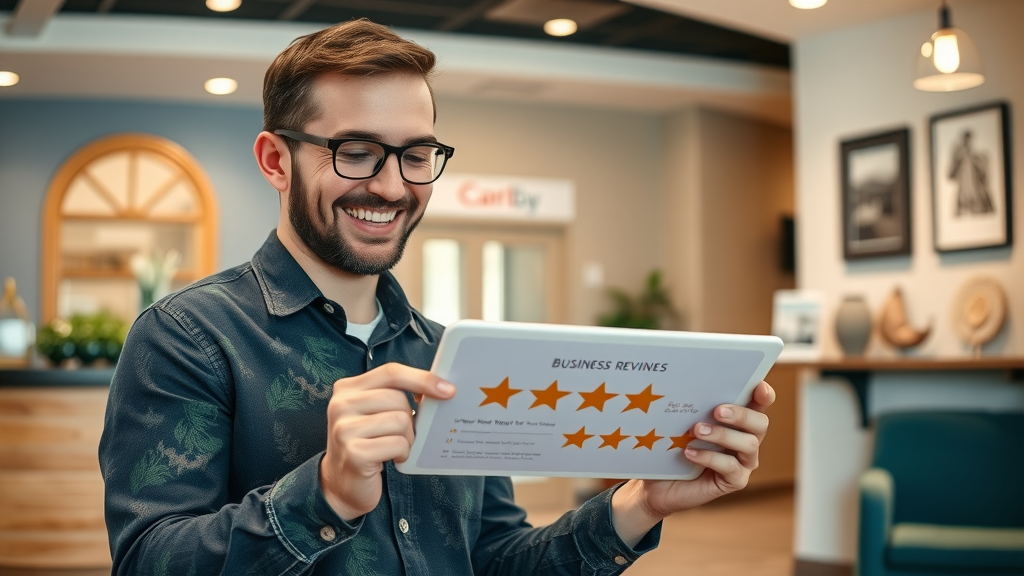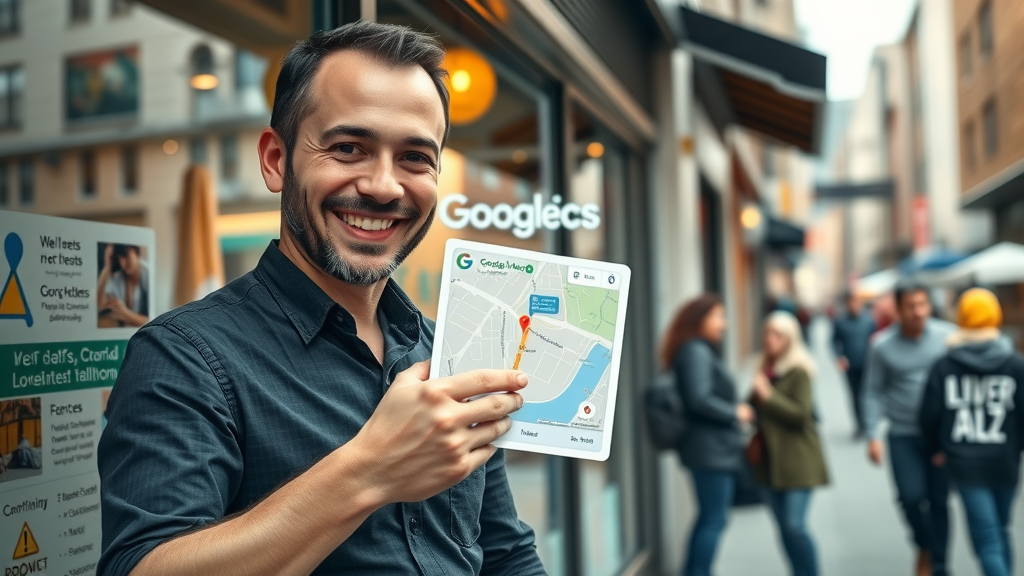Did you know that 46% of all Google searches are looking for local information? This eye-opening figure highlights how crucial on-page local SEO is for businesses fighting for visibility in their immediate communities. In today's hyper-competitive climate, understanding on-page local SEO can be the difference between thriving and merely surviving. Ready to discover the tricks that will put your business at the top of local search results and keep you ahead of your competitors? Keep reading to unlock actionable tactics that will transform your local SEO game and help your business dominate your city, town, or neighborhood.
Unlocking Success: Why On-Page Local SEO Transforms Local Business Growth
- Did you know that 46% of all Google searches are looking for local information? This eye-opening figure highlights how crucial on-page local SEO is for businesses fighting for visibility in their immediate communities. In today's hyper-competitive climate, understanding on-page local SEO can be the difference between thriving and surviving.

Mastering the Essentials: The Fundamentals of On-Page Local SEO for Local Businesses
What You'll Gain by Mastering On-Page Local SEO
- Greater visibility in local search results
- Improved engagement for your local business
- Advanced understanding of on-page SEO ranking factors
- Actionable on-page local SEO strategies to climb the local search rankings
Learning to master on-page local SEO gives your business the edge it needs. By focusing your SEO efforts directly on the sections of your website that matter, you increase your local business's reach and relevance. This approach makes your business more discoverable by potential customers actively seeking products and services in your area. Enhanced visibility means you are no longer invisible to local searches and can achieve stronger local ranking results than competitors who neglect their on-page SEO.
A well-executed on-page local SEO plan ensures your business appears in top search results for your target customers. Optimizing your site to target local keywords , structuring landing pages to answer user intent, and maintaining accurate business info will all boost engagement. Over time, these efforts lead directly to more foot traffic, phone calls, and inquiries through your website. Remember, on-page optimization is the foundation that supports ongoing local SEO growth and long-term community dominance.
Defining Your Edge: What is On-Page Local SEO?
What is on-page local SEO?
- On-page local SEO refers to the optimization of individual pages on a website to rank better in local search results, targeting customers within a specific geographic area. It involves strategies for keyword targeting, metadata, business info optimization, and user experience, all tailored to boost local business visibility.
On-page local SEO is the process of optimizing the content and structure of your individual website pages to improve visibility in local search results . Unlike general SEO—which aims to help your website rank well across the globe—on-page local SEO is all about winning your neighborhood, city, or region. You achieve this by carefully targeting local keywords , providing clear business information (including your phone number and address), and enhancing the overall user experience for customers near you.
Practical examples of on-page local SEO include optimizing your title tags and meta descriptions with local intent, maintaining consistent NAP (Name, Address, Phone Number) details, and structuring your content to answer frequent local questions. Whether you operate a bakery, hardware store, or legal firm, on-page local SEO helps make your business the first one people see when searching for services nearby. Ultimately, it connects your brand to the community and builds trust with potential local customers.

On-Page SEO vs. Local SEO: Unpacking the Differences and Synergies
What is the difference between on-page SEO and local SEO?
- On-page SEO focuses on enhancing single website pages for search engines and users, addressing elements like internal links, keyword research, landing pages, and user experience. Local SEO, meanwhile, includes both on-page and off-page efforts to improve a local business's ranking in location-based search results. The synergy between them is key for dominating local rankings.
It's important to distinguish between on-page SEO and local SEO , as each targets unique aspects of your overall search presence. On-page SEO refers to all actions taken directly on your website’s pages—optimizing headings, using proper internal links, refining landing page copy, and ensuring strong user experience. These help your website gain visibility in global and national search results.
In contrast, local SEO encompasses both on-page tactics and off-page activities—like acquiring local business citations, managing your Google Business Profile, and building reviews—designed specifically to boost ranking in location-based search results . The synergy emerges when both are strategically combined: strong on-page local SEO makes your site authoritative, while complementary local SEO tactics send clear signals to search engines about your local relevance and legitimacy.

Local Ranking Factors: What Really Moves the Needle in Local SEO
| Ranking Factor | On-Page Local SEO Impact | Description |
|---|---|---|
| Google Business Profile | High | Completeness & accuracy critical |
| Keywords in Content | High | Must target relevant local keywords |
| NAP Consistency | High | Business info must be consistent |
| Internal Links | Medium | Supports user navigation & SEO |
| Landing Page Relevance | Medium | Localized content increases ranking |
Several key ranking factors determine your position within local search ecosystems. The most influential are the accuracy of your Google Business Profile , the strategic use of local keywords in content, and consistent NAP (Name, Address, Phone Number) details across your website and listings. Search engines rely on this information to verify legitimacy and location, rewarding accuracy with higher placement in search results .
Medium-impact factors such as well-implemented internal links and highly relevant landing page content further bolster your site’s SEO foundation. Internal links that point users from your home page to local landing pages or services reinforce your focus on particular neighborhoods or cities. When combined, these strategies build strong local ranking signals, making your business more attractive to both users and search engines looking for the most authoritative local options.

Step-by-Step Guide: Creating a Powerful On-Page Local SEO Plan
Local Keyword Research: Uncovering the Search Terms That Matter
- Identifying high-volume local search queries
- Analyzing competitor keywords for your local business
- Using Google Business Profile insights to refine your strategy
Successful on-page local SEO starts with precise local keyword research . The first step is identifying the high-volume queries potential customers in your area are searching, such as “best pizza in Main Street” or “emergency plumber near [city].” Use tools like Google Keyword Planner, SEMrush, and Google Business Profile insights to zero in on the phrases that will bring highly qualified traffic to your local business .
Analyze your direct competition by studying which keywords local rivals are ranking for on their landing pages. This will enable you to spot gaps and opportunities for your own site. Integrating these high-potential search terms thoughtfully into your page titles, headers, and body content will send strong local signals to search engines, increasing your odds of ranking above others in local search results .
Optimizing Metadata: Titles, Descriptions, and Headings for Local Search
- Including local keywords in title tags
- Crafting compelling meta descriptions for click-throughs
- Structuring headings to address local ranking factors
Meta titles and descriptions are among the most visible parts of your webpage in search engines. Incorporate your most important local keywords —including city, neighborhood, or relevant region—directly in your titles and meta descriptions. This practice reinforces your location relevance and increases the likelihood that searchers in your area will see and click on your listing in search results .
Structuring your headings and page hierarchy to address local ranking factors—such as mentioning service areas and highlighting unique local features—will further reassure search engines and users about your local expertise. The more targeted and locally relevant your metadata, the higher your potential for elevated local rankings and increased engagement.

Business Profile & Location Pages: Tactics for Higher Local Search Results
- Key elements every local landing page requires
- Ensuring consistent business info across pages
- Structuring content for Google Business Profile and business listings
For true dominance in local search , your website must feature well-optimized location pages or landing pages tailored for each physical location or service area. Each page should clearly include your accurate business name, address, and phone number alongside locally relevant content and unique selling points. Make sure that your business info matches the details provided in your Google Business Profile and other business listings to reinforce trust and consistency.
Effectively structured landing pages give a substantial boost to search engines’ confidence in your local relevance, while also improving prediction and accuracy when matching searchers with your business. Regularly review and update these pages to reflect changes in services, hours, and localized offerings. This keeps your site fresh and valuable both to users and search engines.
Leveraging Google Business Profile for Enhanced Local SEO Performance
How to Optimize Your Google Business Profile
- Claiming and verifying your business listing
- Optimizing business information: hours, location, categories
- Leveraging images and posts for engagement
An optimized Google Business Profile can single-handedly elevate your local business in related search results. Begin by claiming your profile and completing every section—address, phone number, business categories, hours, and service offerings. Consistency between your profile and the information found on your website and across business listings is a major ranking factor in local search.
Update your profile regularly with high-quality photos, posts about promotions or events, and detailed service descriptions. Respond to customer reviews and questions to increase engagement and build credibility. Leveraging every available field and interaction opportunity not only boosts your visibility but also increases the likelihood that searchers will become loyal customers.

Internal Links & Local Content: Building Authority and Trust
Internal Linking Best Practices for Local Businesses
- Connecting key pages (home, landing, services) with relevant anchor text
- Highlighting business location and area serviced
- Increasing user engagement through strategic links
Strategic internal linking is crucial for guiding both users and search engines through your website. Ensure your home page, key service pages, and most important local landing pages are interlinked using descriptive anchor text that references your location and top local keyword targets. This internal structure not only signals your relevance for specific locations but also makes it easier for search engines to understand the hierarchy of your site.
Thoughtful internal links nudge visitors to explore more of your site, leading to greater engagement and potentially higher conversion rates. Always look for opportunities to connect pages in a way that feels natural—such as linking a blog post about a local event to your service area page, or referencing testimonials within your main service descriptions.
Crafting Compelling Local Content that Converts
- Writing about local events, news, and updates
- Showcasing testimonials and case studies from your service area
- Answering local search questions proactively
Content that resonates with your community establishes your business as a trusted and engaged local leader. Create locally-focused blog posts, resources, and landing pages that speak directly to common interests, events, and questions in your area. Highlighting customer testimonials and successful case studies from your community not only builds credibility but also increases relevance in local search results .
Proactively answering frequently asked local questions and addressing trending topics positions your website as an indispensable resource. By keeping your content fresh and aligned with what’s happening in your neighborhood, you’ll drive steady engagement, earn more shares, and enhance your reputation among both users and search engines.
"Optimizing a business for local search is no longer optional; it’s imperative for local success." – Industry Expert

Schema Markup & Structured Data: Unlocking Visibility in Local Search Results
Implementing Local Business Schema for Rich Results
- Marking up business name, address, phone, and hours
- Enhancing search result appearance with reviews and ratings
- Making your business information accessible to all major search engines
Schema markup is an advanced but essential step in on-page local SEO, allowing you to provide detailed business information directly to search engines in a structured format. By adding local business schema to your website, you help search engines accurately understand your business name, location, phone number, opening hours, and even customer reviews.
This increased clarity often results in enhanced search result displays—such as star ratings, business hours, and location info—making your listings more eye-catching and trustworthy. Implementing schema not only increases click-through rates but also gives your local business a higher chance of being chosen by searchers needing your services.

Mobile Optimization: Ensuring Local Businesses Are Ready for Users on the Go
- Responsive design that adapts for location-driven searches
- Fast load speed for better user experience
- Click-to-call and map integration for immediate actions
Today’s customers are searching for local solutions while on the move, so your site must be fully optimized for mobile devices. A responsive web design ensures your site adapts seamlessly to screens of all sizes, delivering a smooth experience for users in every context. Fast load times further improve user satisfaction, keeping frustrated visitors from bouncing to competitor sites.
Integrate click-to-call buttons, map links, and easy-to-read navigation for users who want immediate action. When your business is easy to find—and easy to contact—right from a mobile device, you’ll win valuable business from customers needing quick local solutions. Mobile-first optimization is no longer just a suggestion; it’s a strategic imperative for dominating local search.

User Reviews & Reputation: The Secret Ingredient for Higher On-Page Local SEO Rankings
Gathering and Showcasing Local Reviews on Your Site and Your Google Business Profile
- Encouraging satisfied customers to leave detailed reviews
- Responding promptly and professionally to all feedback
- Positioning testimonials for maximum impact
User reviews play a massive role in on-page local SEO rankings. Businesses with fresh, positive reviews appear more trustworthy, both to customers and search engines. Encourage your happiest customers to leave detailed feedback on your Google Business Profile and your website. Make the process simple and rewarding—follow up after a successful visit or project with a polite invitation to review.
Respond quickly and professionally to all reviews, whether positive or negative. Display testimonials strategically on landing pages and service sections to maximize conversion impact. A steady stream of authentic local feedback will help you climb the rankings, while building a loyal customer base that continues to support your business.

Tracking Success: How to Measure On-Page Local SEO Performance
| Metric | Tool | Purpose |
|---|---|---|
| Local Rank | BrightLocal, Whitespark | Track position in local search results |
| Organic Search Traffic | Google Analytics | Monitor local SEO traffic shifts |
| Google Business Insights | Google Business Profile | Analyze engagement & local searches |
Measuring the results of your on-page local SEO efforts is critical for ongoing improvement. Utilize tools like BrightLocal and Whitespark to monitor your local rank in relevant search queries. Google Analytics will help you track changes in organic search traffic that signal successful optimization. Meanwhile, regularly reviewing your Google Business Insights gives you a window into how customers are finding and interacting with your business in local search results .
By tracking these metrics consistently, you can identify what’s working and what needs adjustment, ensuring your on-page local SEO plan continues to deliver strong visibility, engagement, and revenue for your business in your community.
People Also Ask: Quick Answers to Common On-Page Local SEO Questions
What is on-page local SEO?
- On-page local SEO involves optimizing web pages for better ranking in local searches, focusing on keywords, localized content, and accurate business information to attract customers nearby.
What is the difference between on-page SEO and local SEO?
- On-page SEO is broader and improves general website and page ranking, while local SEO targets search results in specific geographic areas, using unique strategies like Google Business Profile optimization.
How do you do on-page SEO?
- Optimize metadata, page titles, content, and internal links; use relevant local keywords, ensure mobile-friendliness, and keep business information consistent throughout your site.
What is the best strategy for local SEO?
- Combining on-page optimization, robust Google Business Profile activity, reputation management, and strategic local content creation provides the best outcomes for local SEO domination.
Frequently Asked Questions About On-Page Local SEO
- What are the most important on-page factors for local SEO? Targeting local keywords, consistent NAP information, optimized metadata, and localized landing pages are crucial.
- How often should I update my business listing for local SEO? Review and update your business listing at least quarterly or after any significant business change to keep information accurate and boost local visibility.
- Can schema markup really boost my local search ranking? Yes, implementing local business schema can improve how search engines understand and display your business, increasing clicks and visibility.
- What is the impact of local reviews on local ranking? Regular positive reviews enhance your reputation in search results, serve as a trust signal, and can improve your local ranking.
Key Points Every Local Business Must Know to Win With On-Page Local SEO
- Consistency in NAP (name, address, phone)
- Targeting the right local keywords
- Keeping content fresh and locally relevant
- Engaging community through local content and reviews
Start Dominating Your Market: Your Next Steps in On-Page Local SEO
- Using these expert on-page local SEO tactics, local businesses can take immediate action to boost visibility, attract nearby customers, and drive real growth today. Begin implementing these changes now, and watch your local ranking soar.
Take action with these strategies now to own your local market and become your community's go-to business for years to come!
 Add Row
Add Row  Add
Add 




Write A Comment